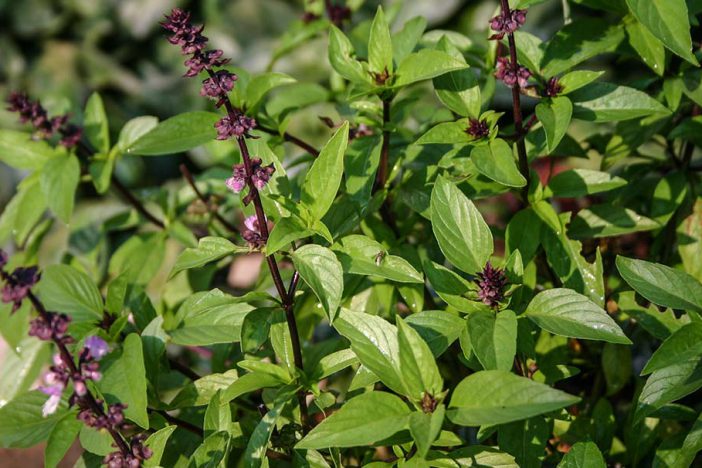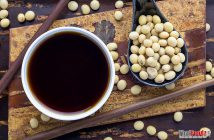The leaves of Thai basil, horapa in Thai, are widely used in the cuisines of Southeast Asia, including Thai, Vietnamese, Lao and Cambodian cuisines.
Thai basil, O. basilicum var. thyrsiflora, is one variety of sweet basil, Ocimum basilicum. It is well known as horapa in Thai and húng quế in Vietnamese. Thai basil itself also has multiple varieties, and the Siam Queen basil is one, commonly grown in the United States. It is a bushy plant with multi purple branches, can grow up to 50 cm, and has shiny green and slightly serrated leaves with anise-and-licorice-like and slightly spicy flavour. If comparing with sweet basil, its leaves, in spear-like shape, are smaller and narrower. Thai basil’s flowers are in a form of a thyrse. Its inflorescence is purple, and when opening, the flowers are pink.
In Thailand, the leaves of Thai basil are consumed in either fresh or cooked form, mostly added at the end of the cooking time. Khanom chin, Thai vermicelli, usually accompanied by curries and vegetables, always has fresh Thai basil leaves enhance its flavour. Thai basil leaves are also a frequent ingredient in making kaeng phed or red curry and gaeng kiew wan or green curry. In steaming of seafood, especially Asian green mussels, Thai basil leaves are often added to cover an unpleasant smell and enhance a flavor. In Western kitchens, Thai basil is the most common basil used for Asian cooking since much more readily available. Sweet basil is a good substitute for this.
Image source: https://en.wikipedia.org/wiki/Thai_basil





